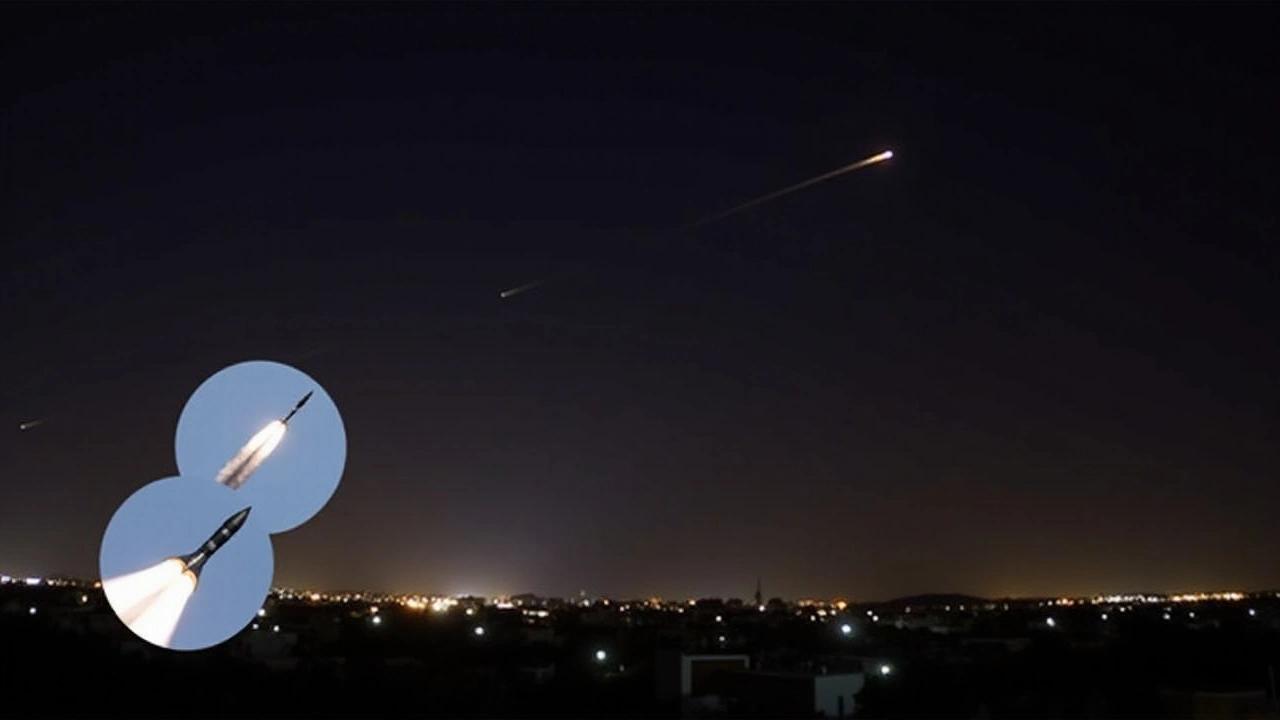How Israel's Advanced Air Defences Shielded the Nation from Iran's Missile Barrage
On a tense Tuesday night, news broke that Iran had launched a substantial missile attack on Israel. Reports estimate that roughly 180 missiles were fired, aiming to inflict significant damage. The sheer scale of the assault had many on edge, but Israel's sophisticated air defense systems quickly sprang into action. The night turned into a remarkable showcase of technological prowess as these systems effectively intercepted most of the incoming missiles.
The incident highlights a critical aspect of modern warfare: the importance of advanced missile defense systems. Israel's multi-layered air defense network, which includes the Iron Dome, David's Sling, and Arrow systems, proved its mettle yet again. Each layer is designed to target different types of threats, from short-range rockets to long-range ballistic missiles, ensuring a comprehensive shield over the nation.
A Night of High Stakes
The attack began late in the evening, catching many citizens off guard. Air raid sirens wailed across multiple cities, sending residents scrambling for shelters. The atmosphere was thick with tension as the nation's fate seemed to hang in the balance. Despite the chaos, the air defense operators remained focused and coordinated, a testament to their rigorous training and preparedness.
As the missiles streaked across the sky, radar systems quickly identified and tracked each threat. The Iron Dome, known for its agility in intercepting short-range rockets, was the first line of defense. It swiftly launched interceptor missiles, which destroyed the incoming rockets with pinpoint accuracy. Each successful interception was a relief, but the barrage was far from over.
Layered Defense Systems
For the higher altitude and longer-range missiles, Israel's David's Sling and Arrow systems came into play. David's Sling, designed to tackle medium-range threats, engaged the missiles that the Iron Dome couldn't reach. Its advanced sensors and interception technology ensured that even the more elusive targets were neutralized.
The Arrow system, Israel's most strategic defense layer, targeted the ballistic missiles. With its ability to detect and intercept threats in space, the Arrow system is a critical component of Israel's defense architecture. As the barrage continued, these systems worked in unison to form an impenetrable shield, successfully intercepting the majority of the missiles.
Coordinated Efforts
The success of Israel's air defense on that fateful night wasn't just due to technology but also the seamless coordination between different defense units. Command centers received real-time data from multiple radar stations, allowing them to make split-second decisions. Operators from the Iron Dome, David's Sling, and Arrow systems communicated constantly, ensuring that no threat was overlooked.
This high level of coordination extends beyond Israel’s borders. The nation often works closely with allies to improve its defense capabilities. For instance, the United States has been a key partner, providing financial support and technological expertise. This cooperation has led to advancements in missile defense technologies, ensuring that Israel remains prepared for future threats.
The Human Element
While the technology is impressive, it's the human element that truly makes the difference. The operators behind these systems undergo rigorous training to prepare for such high-stakes situations. Their ability to remain calm and focused under pressure is crucial to the effectiveness of the defense systems. On that Tuesday night, their expertise and dedication played a significant role in protecting the nation.
Civilian safety drills and public awareness campaigns also contribute to the overall defense strategy. Citizens are regularly educated on how to respond during missile attacks, ensuring that they can protect themselves and their families. The swift and orderly evacuation to shelters that night was a direct result of these ongoing efforts.
Implications and Future Developments
The successful interception of the majority of the missiles underscores the strategic importance of Israel’s air defenses. In an unstable region, the ability to neutralize large-scale attacks is vital for national security. This incident serves as a reminder of the constant threats that Israel faces and the need for continued investment in defense technologies.
Looking ahead, Israel is already planning upgrades and additions to its air defense network. Research and development in missile interception technology continue to advance, with the goal of improving efficiency and effectiveness. New systems are being tested, and existing ones are being enhanced to ensure that the nation can counter even more sophisticated threats.
International cooperation also remains a key focus. Joint exercises and shared intelligence with allies help Israel stay ahead of potential threats. These partnerships are essential for maintaining a robust defense strategy and ensuring that the nation is always prepared.
In conclusion, the missile barrage on that Tuesday night was a stark reminder of the volatile security landscape in the Middle East. However, it also highlighted the strength and resilience of Israel's air defense systems. Through advanced technology, seamless coordination, and dedicated personnel, Israel once again demonstrated its ability to protect its citizens from external threats. The incident not only showcased existing capabilities but also set the stage for future advancements in missile defense.

Write a comment